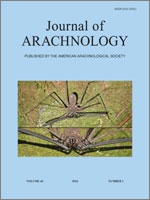Although sexual size dimorphism is a widely observed phenomenon in nature, the selective forces that led to it are still controversial. Here we study sexual dimorphism in the static allometry of the legs of a large ground spider, Grammostola rosea (Walckenaer, 1837). We found that this species has a moderate sexual size dimorphism and males have longer legs relative to body size than females, similar to other ground spiders. We propose that male mate searching behavior may be a relevant factor in the genesis of this phenomenon. The longer extremities in males with respect to mass than in females would lead to an optimization of the costs associated with locomotion, because males have smaller masses and longer legs than the females both in absolute terms and relative to body mass.
How to translate text using browser tools
1 April 2016
Allometry of locomotor organs and sexual size dimorphism in the mygalomorph spider Grammostola rosea (Walckenaer, 1837) (Araneae, Theraphosidae)
Bruno Grossi,
Claudio Veloso,
Andrés Taucare-Ríos,
Mauricio Canals
ACCESS THE FULL ARTICLE
<
Previous Article
|

The Journal of Arachnology
Vol. 44 • No. 1
April 2016
Vol. 44 • No. 1
April 2016
allometry
Mygalomorphae
sexual dimorphism
spiders




